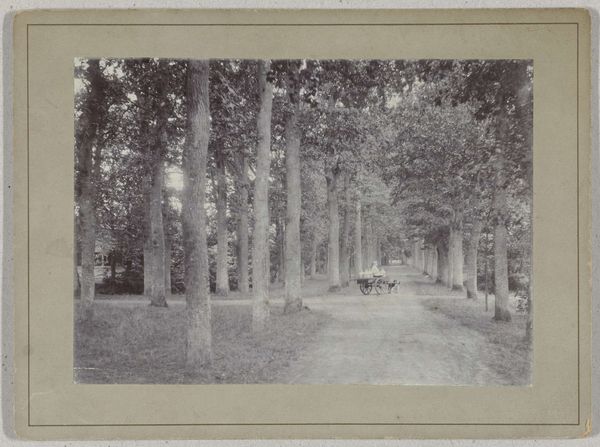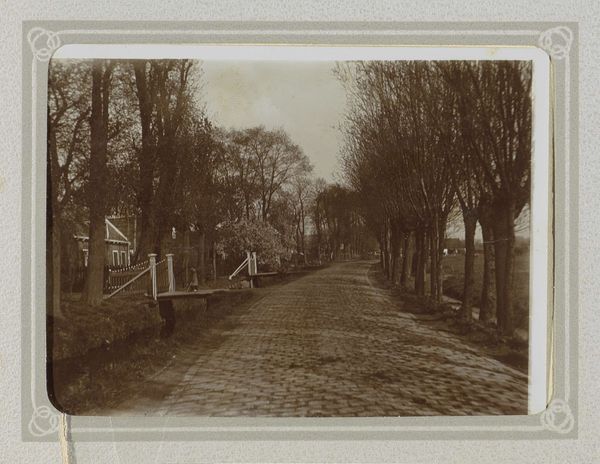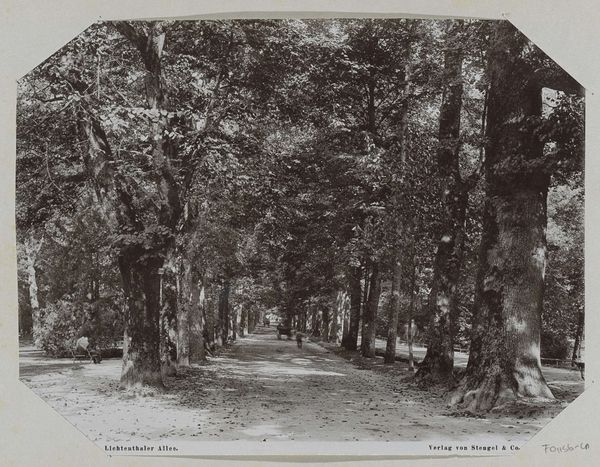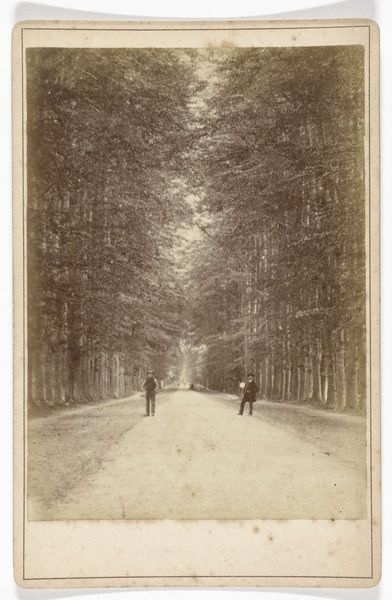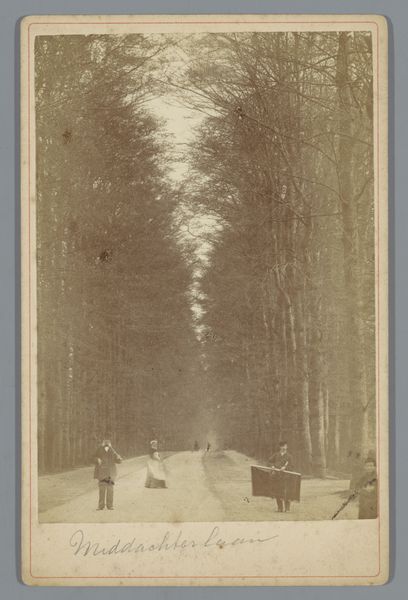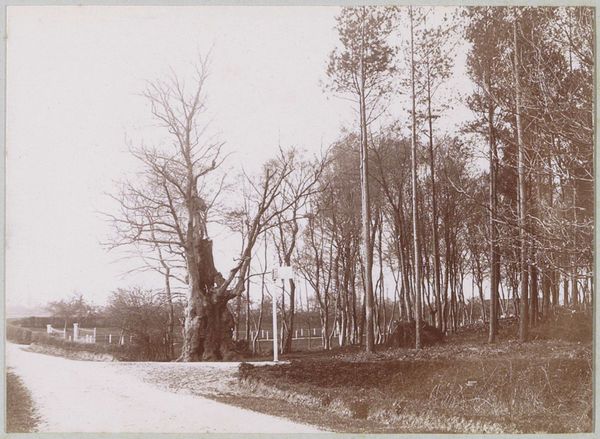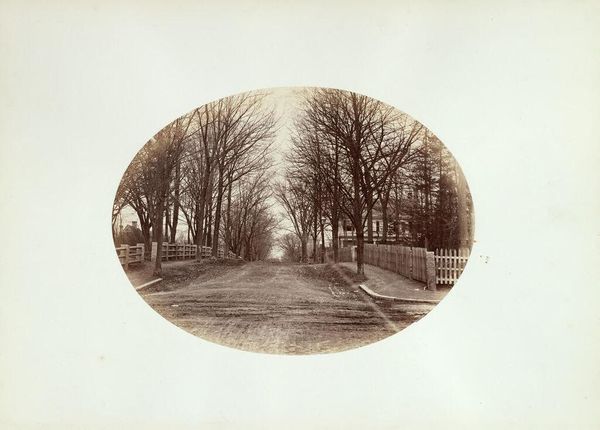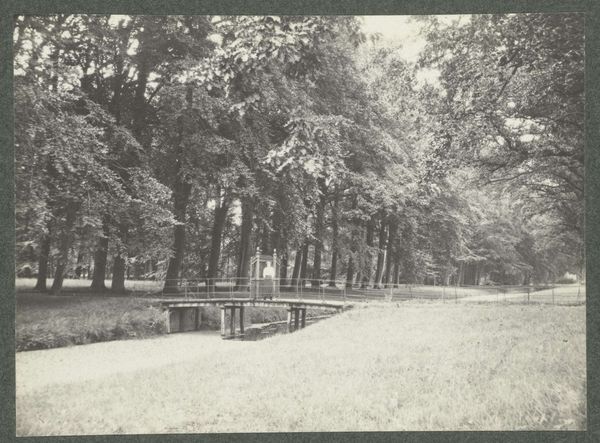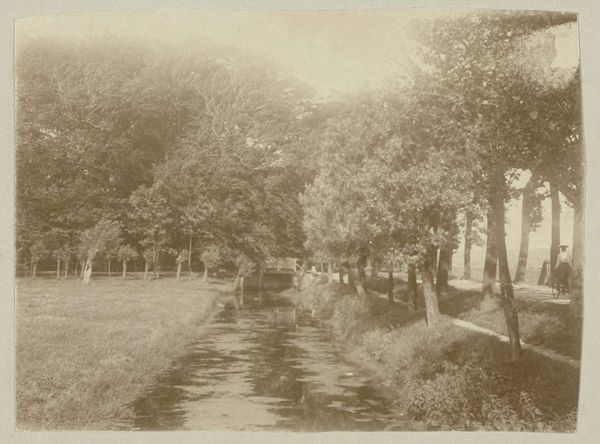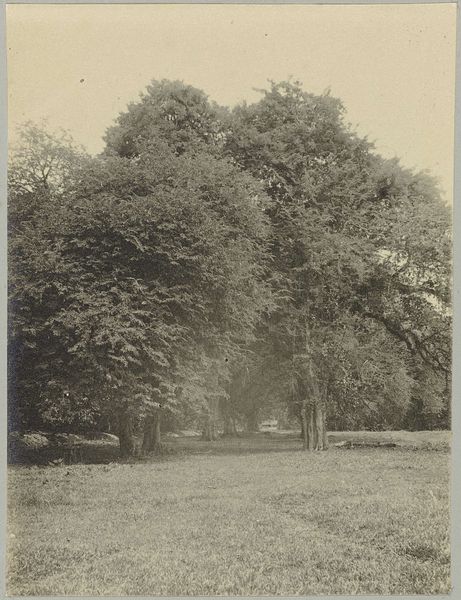
photography
#
16_19th-century
#
pictorialism
#
landscape
#
photography
Dimensions: height 55 mm, width 89 mm, height 60 mm, width 105 mm
Copyright: Rijks Museum: Open Domain
Curator: This photograph, titled "Sociëteitslaan in het Asserbosch," was taken by Johannes Gerardus Kramer likely between 1878 and 1890. It beautifully captures a lane within the Asserbosch forest. Editor: It’s remarkably serene, almost ethereal. The composition, with its strong horizontal lines of the road and the receding trees, draws you deep into the image. And that sepia tone lends a wistful air. Curator: Sepia was standard for early photography, the process influencing both the aesthetic and longevity. Look closely, and you'll notice figures scattered along the road. Kramer used the wet collodion process. The material processes of its making is fascinating; imagine the labour. Editor: True, but consider how the technique sculpts the image. See how the light dapples the path, creating texture and breaking the severe geometry of the road and tree trunks? It’s not just documentary. Curator: Indeed, the Pictorialist style evident here reflects a growing desire to elevate photography to the status of fine art. Think of the labour that that requires, and that cultural investment! Pictorialism saw photographers using manipulation, the techniques associated more with paintings than photos to create the art and the idea. Editor: I see what you mean, with the figures blending to the background and being softened as part of the atmosphere. Kramer makes choices that enhance the dream-like impression rather than giving us crisp details, the atmospheric effects adding to the effect of something lost, something that may be gone. Curator: This aesthetic ties directly to how middle-class society was evolving: from increased industrial output to leisure, including forest strolls as depicted in art. Landscape became an integral element for class formation. Editor: Interesting, as you mentioned class. From a purely aesthetic perspective, I appreciate the quiet confidence of the composition, how it manages to be both inviting and slightly aloof. It's less about a grand statement and more about the poetry of everyday scenes. Curator: Exactly, everyday made fine art with the processes made open to everyone. Well, that is certainly what photography allowed! Editor: Ultimately, it is the quietness in this image that lingers, not its labour process so much. The road seems like it continues and continues.
Comments
No comments
Be the first to comment and join the conversation on the ultimate creative platform.
